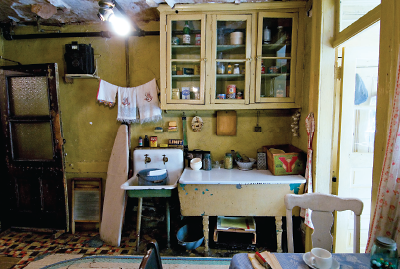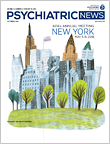In the first decades after the American Revolution, immigration from non-English-speaking countries was minimal. But economic and political conditions in Europe would cause that to change in the early 19th century when Germans, Irish, and refugees from Eastern Europe began to arrive in America, many of them landing in Manhattan’s Lower East Side.
There they took up residence in cheap, hastily built multi-family living spaces—tenements—or sometimes in the former homes of prosperous families that were divided up into multiple living spaces to accommodate the growing immigrant community.
This iconic American story is preserved in a remarkable way at New York’s Lower East Side Tenement Museum, located at 103 Orchard Street between Delancey and Grand streets. The building at 97 Orchard Street, erected in 1863, contained 20 three-room apartments, arranged four to a floor, two in front and two in the rear. Each totaled only 325 square feet and consisted of a front room—the only room that received direct light and ventilation—bedroom, and kitchen. Cutting through the center of the building was an unlighted, ventilated wooden staircase.
According to the museum’s website, the apartment building housed nearly 7,000 working-class immigrants before it was vacated in 1941.
There are three ways visitors to New York can experience the Tenement Museum—by touring the buildings and visiting the restored apartments and businesses from different time periods, meeting the residents (played by costumed interpreters) who lived at 97 Orchard Street, and walking the neighborhood and discovering the Lower East Side and the way immigrants helped shaped the area and its culture.
This reporter highly recommends the neighborhood walking tours, which are an hour to 90 minutes long (wear comfortable walking shoes) and are led by guides whose knowledge of New York City history and landscape is broad and deep. There are three walking tours to choose from, offered at various times most days of the week:
•
“Building of the Lower East Side”: This two-hour tour teaches participants about the architects, artists, and everyday people who influenced the design and use of this neighborhood’s buildings and shaped the streetscape of today.
•
“Outside the Home”: During this 90-minute tour, visitors will see the towering Jarmulowsky Bank building, where immigrants deposited (and eventually lost) their life savings; the Daily Forward building, where socialists fought for worker rights; and PS 42, where generations of immigrants learned how to be “American.”
•
“Then and Now”: This two-hour tour tells the story of how neighborhood residents for the past 100 years have fought to preserve their community in the face of profound economic and political changes.
There are three “Meet the Residents” tours, also offered at multiple times:
•
“Victoria Confino”: Participants will tour the home of 14-year-old Victoria Confino, ask her questions about her life, and get a unique perspective on adjusting to life on the Lower East Side.
•
“Live at the Tenement”: Tourgoers will meet residents of 97 Orchard Street and explore multiple apartments.
•
“Tenement Inspectors”: The year is 1906, and visitors meet the landlord and a resident to learn firsthand about the realities of tenement life on the Lower East Side.
Finally, there are nine “tour the buildings” opportunities, including the newest offering, which opened last year, “Under One Roof.” The new tour, offered at 103 Orchard Street, recreates life in the neighborhood after World War II, after the multi-family units that were called “tenements” were closed or eradicated, but the Lower East Side continued to be a magnet for immigrants. Visitors to the new exhibit will see the homes of three sets of immigrants: Bella Epstein, whose parents survived the Holocaust; Jose and Andy Velez, whose mother left Puerto Rico for garment work; and the Wong siblings, whose stories of their mother and other garment workers are highlighted in an interactive, recreated Chinatown garment shop.
In the 20-plus years since it opened, the Tenement Museum has become a popular attraction, so APA members and their families coming to New York are urged to
reserve tickets in advance. ■
More information about the Tenement Museum and its tours can be accessed
here.


